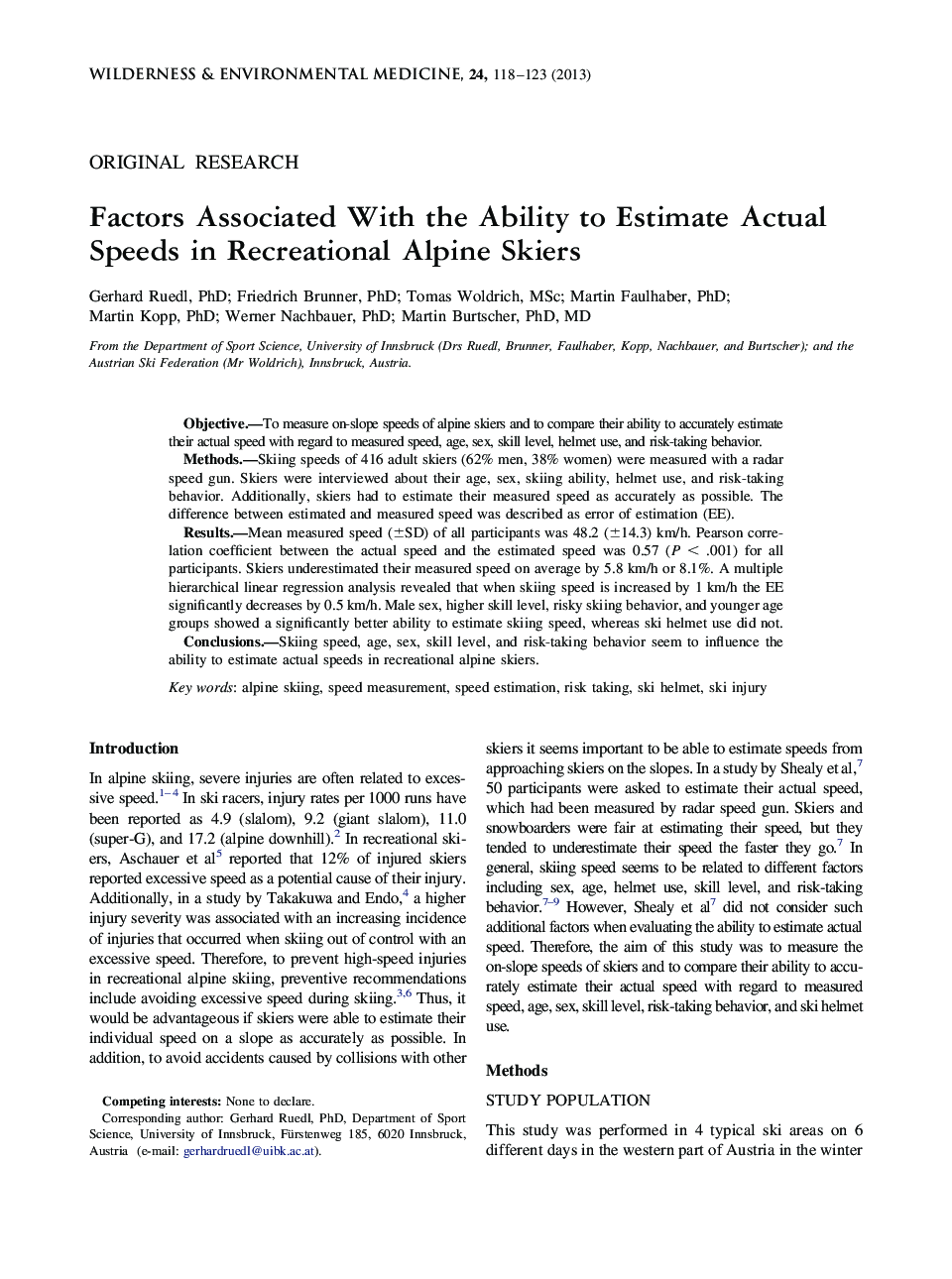| Article ID | Journal | Published Year | Pages | File Type |
|---|---|---|---|---|
| 2614875 | Wilderness & Environmental Medicine | 2013 | 6 Pages |
ObjectiveTo measure on-slope speeds of alpine skiers and to compare their ability to accurately estimate their actual speed with regard to measured speed, age, sex, skill level, helmet use, and risk-taking behavior.MethodsSkiing speeds of 416 adult skiers (62% men, 38% women) were measured with a radar speed gun. Skiers were interviewed about their age, sex, skiing ability, helmet use, and risk-taking behavior. Additionally, skiers had to estimate their measured speed as accurately as possible. The difference between estimated and measured speed was described as error of estimation (EE).ResultsMean measured speed (±SD) of all participants was 48.2 (±14.3) km/h. Pearson correlation coefficient between the actual speed and the estimated speed was 0.57 (P < .001) for all participants. Skiers underestimated their measured speed on average by 5.8 km/h or 8.1%. A multiple hierarchical linear regression analysis revealed that when skiing speed is increased by 1 km/h the EE significantly decreases by 0.5 km/h. Male sex, higher skill level, risky skiing behavior, and younger age groups showed a significantly better ability to estimate skiing speed, whereas ski helmet use did not.ConclusionsSkiing speed, age, sex, skill level, and risk-taking behavior seem to influence the ability to estimate actual speeds in recreational alpine skiers.
